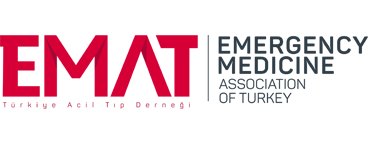Navigating the complexities of bilateral facial nerve palsy: A case report
Caisha Nivenia Moses , Wan Syahmi Bin Wan Mohamad
, Wan Syahmi Bin Wan Mohamad , Kamarul Aryffin Bin Baharuddin
, Kamarul Aryffin Bin Baharuddin , Mohamad Masykurin Bin Mafauzy
, Mohamad Masykurin Bin Mafauzy , Mohd Faiz Bin Mohd Shukri
, Mohd Faiz Bin Mohd Shukri
Department of Emergency Medicine, Universiti Sains Malaysia, Kota Bharu, Kelantan, Malaysia
Keywords: Bell’s palsy, bilateral facial nerve palsy, corticosteroids, electromyography, Guillain–Barré syndrome, idiopathic facial palsy
Abstract
A 32 year old male presented with a 2 week history of progressive bilateral facial weakness, initially diagnosed as unilateral Bell’s palsy. Upon development of bilateral symptoms, further investigations revealed normal hematological, biochemical, and imaging results, ruling out common infectious and autoimmune causes. Electromyography and nerve conduction studies were normal, and lumbar puncture results excluded Guillain–Barré syndrome. The patient was ultimately diagnosed with idiopathic bilateral facial nerve palsy (FNP) after exhaustive exclusion of other etiologies. Treatment with corticosteroids led to symptomatic improvement. This case underscores the importance of a systematic approach in diagnosing rare presentations of FNP and highlights the favorable prognosis with appropriate management.
How to cite this article: Moses CN, Mohamad WS, Baharuddin KA, Mafauzy MM, Shukri MF. Navigating the complexities of bilateral facial nerve palsy: A case report. Turk J Emerg Med 2025;25:239-41.
The authors certify that they have obtained all appropriate patient consent forms. In the form, the patient has given his consent for his images and other clinical information to be reported in the journal. The patient understands that his name and initials will not be published and due efforts will be made to conceal his identity, but anonymity cannot be guaranteed.
CNM: Conceptualization (lead); Writing - Original draft (lead); Writing - Review and editing (equal) WS: Writing - Review and editing (equal); Writing - Original draft (supporting) KABB: Writing - Review and editing (equal) MMBM: Writing - Original draft (supporting) MFB: Writing - Review and editing (equal).
None Declared.
None.
We would like to express our sincere gratitude to the patient for his cooperation and consent to participate in this case report. We extend our appreciation to the medical and nursing staff involved in the care and management of the patient. We acknowledge the support of our institution for providing the necessary resources for the successful completion of this case report.

